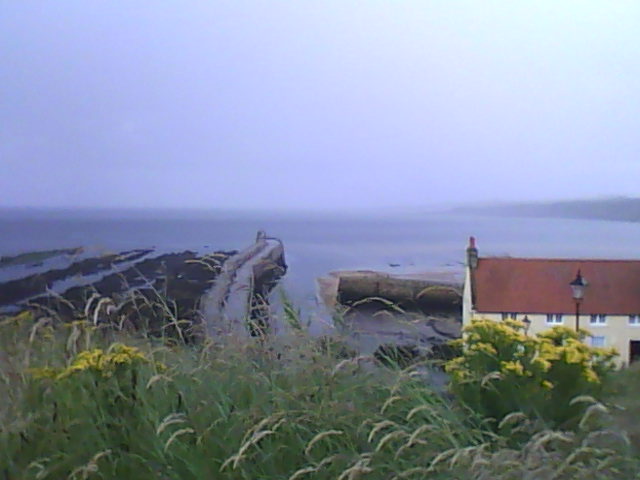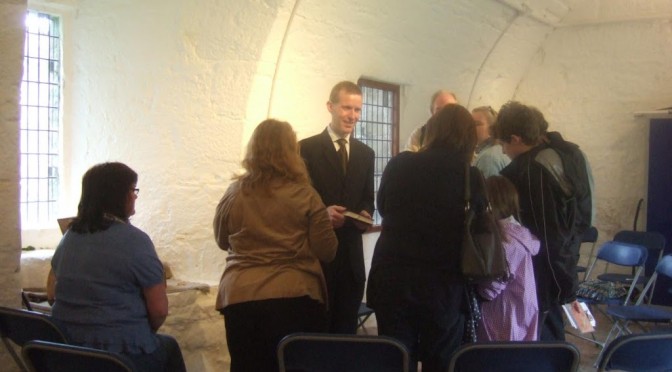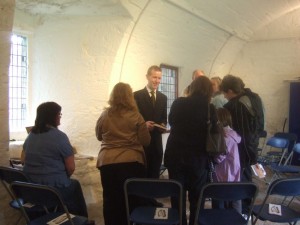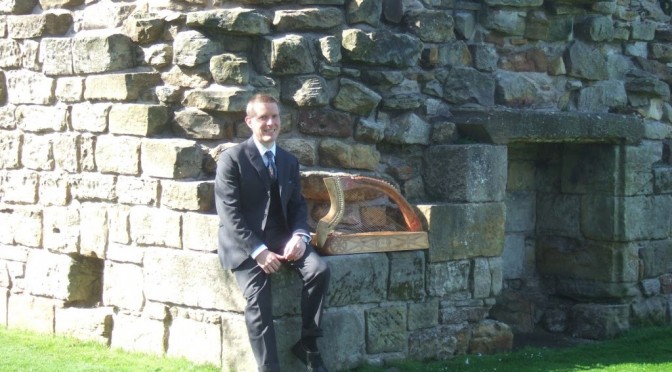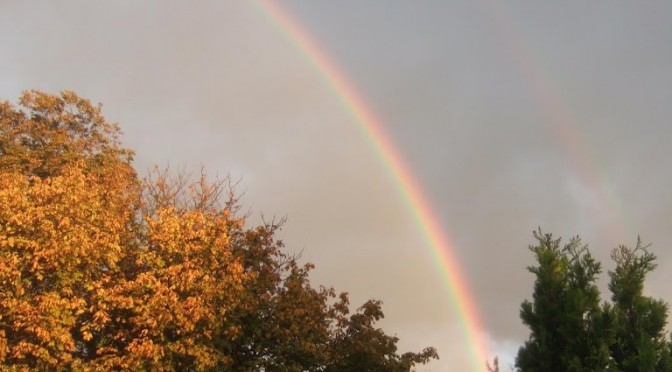An experimental photograph in unusual weather with hailstorms and beautiful sunshine.
Tag: Fife
Margaret of Scotland and the Maid of Norway
The next concert in my summer series of medieval harp recitals in St Andrews cathedral is on Tuesday 3rd July, starting at 12.45pm.
Held in the atmospheric surroundings of the ruined cathedral, the programme for July’s event tells the story of Margaret of Scotland, 1281: The story of Scotland and Norway, the Royal Wedding and the lead up to the Wars of Independence.
Using a selection of medieval music and traditional tunes from Scotland and from Scandinavia, the late 13th century history and politics will be dramatically brought to life, as the old ballad says: “The King sat in Dunfermline Toun, drinking of the blood red wine…”
More info about the summer series at St Andrews Cathedral:
http://www.simonchadwick.net/cathedral/
Date and time:
Tuesday 3rd July, starting at 12.45pm, finishing around 1.15pm.
Venue:
St Andrews Cathedral
St Andrews, Fife, Scotland
Admission Free
Please collect a ticket from the Visitor Centre: 01334 472563
Future events in this series:
Tuesday 7th August, 12.45pm: Old Gaelic Laments
Tuesday 4th September, 12.45pm: Heroic music
Cathedral concert
Here is a photo from today’s concert in St Andrews cathedral ruins. There was much interest from the audience in the three instruments I played today – the replica Queen Mary clarsach, the lyre with iron, brass and silver strings and fitted with the replica Iron-age bridge from Uamh an Ard Achaidh, and most of all the jouhikko.
In this photo I am showing off the facsimile of the St Andrews music book, the 13th century manuscript that originally belonged to the cathedral, and which contains a huge amount of early polyphonic liturgical music.
Medieval harp music at St Andrews Cathedral
Simon Chadwick is about to start his much-loved annual summer series of medieval harp concerts in St Andrews Cathedral. The first event in the series is a programme of medieval church music from the 12th century.
The concert is on Tuesday 5th June, at 12.45pm, in the Priors House, a medieval vaulted chamber in the cathedral grounds in St Andrews.
This concert features a programme of sacred music from the medieval heyday of the cathedral, including tunes lifted from St Andrews Cathedral’s own medieval manuscript of sacred chants. There will also be music for St Columba, from Inchcolm abbey in the Firth of Forth.
As well as playing the Scottish monastic plainchant on his beautiful decorated replica of the medieval Scottish Queen Mary harp, Simon will demonstrate other unusual musical instruments that were played in medieval Scotland during the half-hour concert.
Simon is based in St Andrews, and is a specialist in historical Scottish and Irish music. His harp was commissioned from a sculptor in Ireland, and is an exact copy of the medieval harp which is preserved in the National Museum of Scotland in Edinburgh, and which was said to have once belonged to Mary Queen of Scots. Simon teaches and performs at events across Scotland, and helps run an annual summer school in Ireland for the historic Irish and Scottish harp music.
The St Andrews Cathedral concert series will continue on the first Tuesday of each month through to September, with a different theme each month. Click here for full details.
July’s programme will use medieval and traditional tunes and song to tell the fascinating story of Margaret of Scotland, her wedding to the King of Norway in 1281, and the dramatic historical events over the following decade culminating in the succession crisis and Robert the Bruce; while August’s recital will present the “Old Gaelic Laments” featured on Simon’s newly released CD.
Cathedral recitals this summer
Historic Scotland have confirmed the dates of the cathedral concerts in St Andrews this summer: 5 June, 3 July, 7 Aug and 4 September. Full details are on my Cathedral page.
The most exciting new programme for 2012 will be July’s event. I will be telling the story of the wedding of Princess Margaret of Scotland to the King of Norway in 1281, and the subsequent events which led to the Wars of Independence in the 1290s. There are a number of Fife connections with these events, including the Dunfermline and Burntisland setting of the traditional ballad which I learned from a recording of the traveller Duncan Williamson, who eventually settled in Ladybank. There is also the famous cliff fall of King Alexander III at Kinghorn which led to the succession crisis.
Cathedral music in St Andrews

I am kicking off my summer series of medieval harp concerts in St Andrews Cathedral, with a programme of medieval church music from the 12th century.
The concert is on Tuesday 7th June, at 12.45pm, in the Priors House, a medieval vaulted chamber in the cathedral grounds in St Andrews.
Celebrating 850 years since building work commenced on the cathedral in 1161, this concert features a programme of sacred music from that time, from St Andrews, Inchcolm and further afield. As well as playing the Scottish monastic plainchant on my beautiful decorated replica of the Queen Mary harp, I will demonstrate other unusual medieval Scottish instruments during the half-hour concert.
The St Andrews Cathedral concert series will continue on the first Tuesday of each month through to September, with a different theme each month. To follow June’s sacred airs, July will bring ferocious medieval battle music, while August’s recital will present formal elegies and laments.
Further information is available at http://www.simonchadwick.net/cathedral/
This event is organised by Historic Scotland. Admission is free, but ticketed; tickets can be obtained from the Cathedral visitor centre, tel 01334 472563.
Cathedral recitals 2011
Historic Scotland have confirmed the dates for the summer 2011 cathedral recitals, in the ruins of St Andrews Cathedral in Fife, Scotland.
The dates are 7th June, 5th July, 2nd August, 6th September. That’s the first Tuesday of every month, at 12.45pm.
For more details please see http://www.simonchadwick.net/cathedral/
A rainbow in St Andrews
Medieval sacred music in St Andrews Cathedral

On Tuesday 1st June at 12.45pm, historical harp specialist Simon Chadwick will be playing medieval sacred music in the ruins of St Andrews Cathedral.
Using his decorated replica of the medieval Scottish ‘Queen Mary’ harp with gold and silver wire strings, Simon will play music from medieval manuscripts from Fife and beyond.
The programme will include repertory from the ‘St Andrews Music Book’ – a medieval manuscript compiled and written in St Andrews in the 13th century, which is now preserved in a library in Germany, as well as tunes from the priory on the Isle of Inchcolm in the Firth of Forth.
This event is part of Simon’s summer series of medieval harp concerts in the cathedral. Performed in the Priors House, a medieval vaulted chamber set within the ruins of the Cathedral in St Andrews, the concerts are every month until September.
Also featuring examples of religious music from Ireland and Wales, this series brings to life different aspects of ancient and historical Scottish music.
The harp Simon uses is a unique replica of the clarsach of Mary Queen of Scots. The 500-year-old original is preserved in a glass case in the National Museum in Edinburgh. Simon commissioned his replica from Irish harp maker Davy Patton in 2006-7. With its amazing soundbox carved out of a single huge willow log, and its intricate carved and painted decoration, the replica harp is a precious medieval art object that fits very well into the ancient ambience of the cathedral.
Admission is free. Tickets can be reserved in advance by calling the Cathedral visitor centre on 01334 472563.
More information at www.simonchadwick.net/cathedral
The Fife Traditional Singing Weekend
On Sunday I was at the Fife Traditional Singing Weekend, in a fine, airy windowed building in the Fife countryside by Collessie. It was very interesting to see and hear so many different traditional singers, many from the East of Scotland but a number from further afield. So many different styles of vocal delivery, and types of song.
There was little really ancient, to connect with my work here (in a direct form anyway), but I have a lot to think about and it was great to see people like Sheila Stewart there.
My favourite moment was an anecdote from Phyllis Martin, of visiting an old lady in Galloway to collect songs. The lady said “I’ll get some tea”, and came back with a tray with 2 cups of tea and a large sponge cake, cut neatly in 2 down the middle. Phyllis said, she asked if they should have a knife. The lady replied, no, this half is for you, and this half is for me.
It was also a lovely day, sunny and quite warm.

